FLUX IN – Lightweight responsive structures
Researching modular lightweight structures that challenge current fabrication methods
The research question is ¨Can responsive macro porous structures be used to develop
self assembled, lightweight, rigid systems?¨
The following study is based on the material research of macro porous structures (MPS) and their ability to develop lightweight rigid systems. By focusing on a specific MPS such as PU foam an understanding of its capillarity is developed in order to manipulate its structural characteristics. This follows research of affordable, natural phase changing materials (PCM) that can be impregnated in our MPS when in liquid state. By integrating graphene within our PCM we attempt to control thermal and mechanical properties that is pertinent in the latter of our research. The elastic flexibility of PU foam is used not only to integrate PCMs but to challenge its form in various states. When initially impregnated, the PU foam is compressed and left to harden. This focuses on reducing the MPS volume and weight whilst ensuring a ratio of PCM that, when expanded, maintains homogeneous impregnation, and rigidity when cooled. After developing a material that can be compressed and then expanded while maintaining structural integrity, this study begins to focus on varying control methods to develop novel architectural systems. From envelopes, controlled heating, formal properties, joinery typologies, adhesives, and inflatables a plethora of applications are explored. This enables us to test formalism, expansion, rigidity and scalability where we finally narrow the research into developing a lightweight, rigid system.
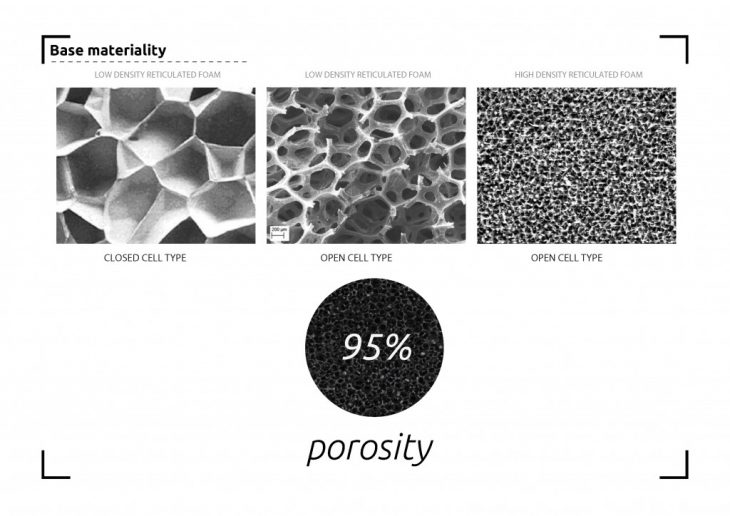
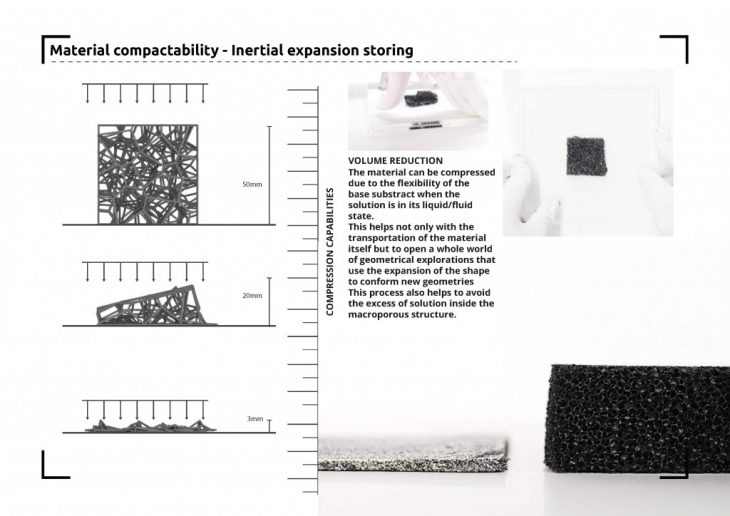
The initial composition of our PCM was purely wax. After experimenting with Paraffin and Bees wax we determined Bees wax melting point and structural capabilities were superior to Paraffin. In addition Bee wax has been found to exhibit many desirable characteristics for thermal energy storage applications, such as high heat of fusion and stability with no chemical degradation after repeated heating and cooling. However, after impregnation with PU foam Bees wax alone added minimal resistance to compression. After reviewing strengthening compounds for waxes it was determined that Carnauba and its emulsification and binding capabilities were optimal to mix with the bees wax. Furthermore Carnauba wax forms resistant super-hydrophobic films which enhances the ability of our mixture to coat the capillaries of PU foam. The introduction of this hardening agent was only found useful when mixed with a natural Pine Resin (colofonia). Although brittle in its natural state the added waxes created durability in the solution. The inherent coating ability of Rosin was optimal for impregnating. Furthermore it decreased the viscosity of the PCM composite and increased the strength of the MPS exponentially.
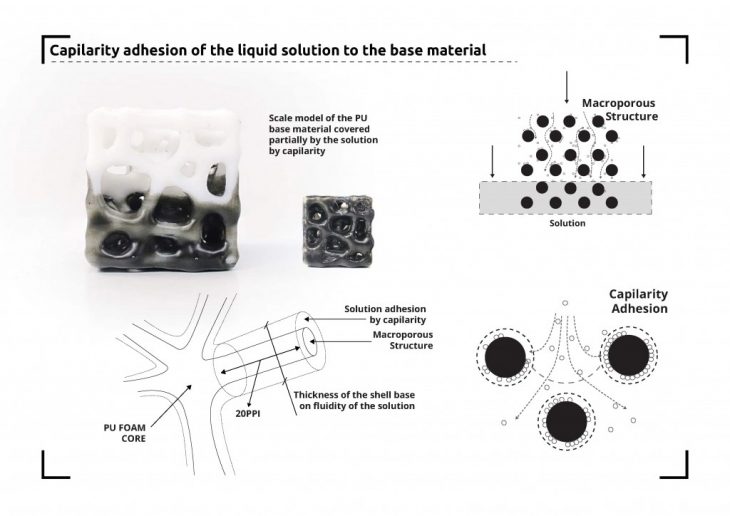
At this stage Graphene was added in an attempt to manipulate the thermal, structural, and even electrically conductive properties of the phase changing material. Graphene was able to increase thermal retention thus allowing for increased time to manipulate the MPS before returning to its solid state. By increasing the surface area adhesion through graphene the capillary walls became increasingly stronger and is proven by our compression testing. Conductivity is thought to not be achievable through the capillary walls due to micro fractures and was not explored further. Increased percentages of Graphene also increased viscosity of the solution which decreased the ability to homogeneously impregnate the PU foam. It was determined that a 10% graphene solution was optimal to increase structural and thermal properties.
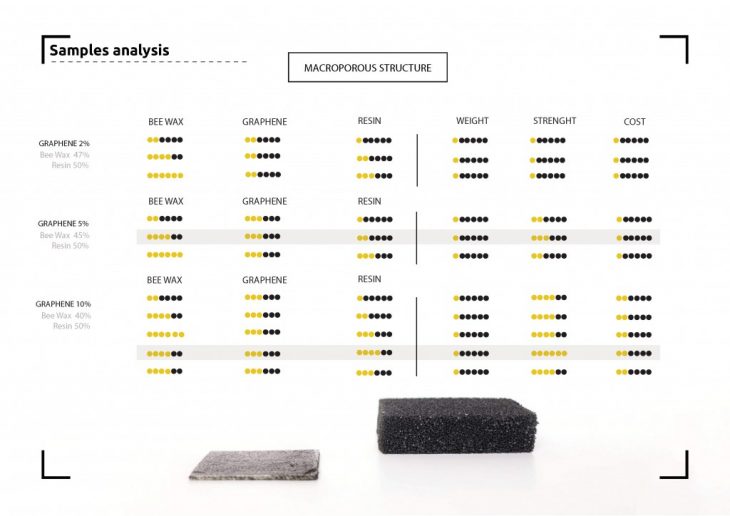
By combining the various attributes of our solution we began to hypothesize a material that represents the properties of a phase changing macro porous structure with lattice properties, challenging characteristics between 2D and 3D states. As our base material we utilized the macro porous structure PU Foam to represent a lattice. Although PU foam is inherently soft and non-structural we impregnated a PCM composite through the PU Foams capillarity. This allowed for optimal reinforcement with minimal weight added. By compressing the impregnated MPS during the PCMs liquid state and left to harden we are able to store the expansion in a compressed state. Once heated the material is allowed to expand whilst maintaining structural properties and homogeneous distribution of the PCM.
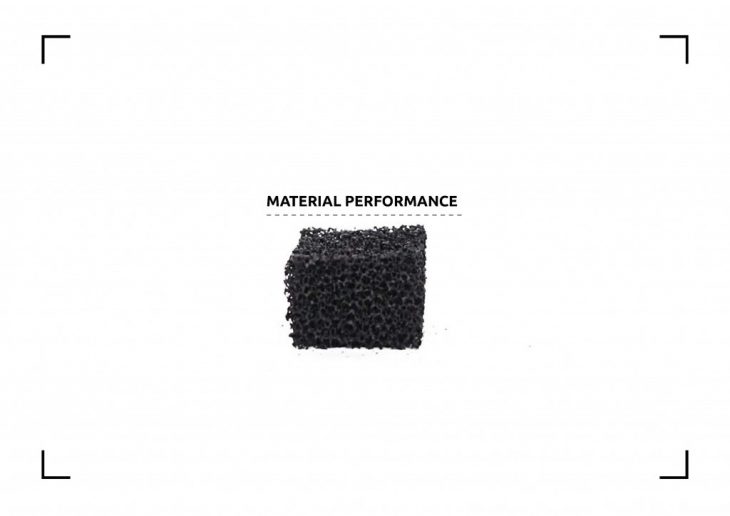
The material performance revolved mostly around the compounds in our mixture. The colofonia and graphene mixture becoming the strongest where a small cube of 4x4cm at a weight of 13 grams was able to hold 25kg before compressing. An encased tube with the same mixture weighting 120 grams was able to hold 75kg before deformation. The interesting aspect of this is that when both structures were heated again they fully regained shape and structural performance. In a similar experiment 2 MPS were adhered to boards of MDF and withstood a 25 kg of weight before deforming. This proves not only the attributes of adhesion and structural capabilities but the ability to regain potency once reheated.
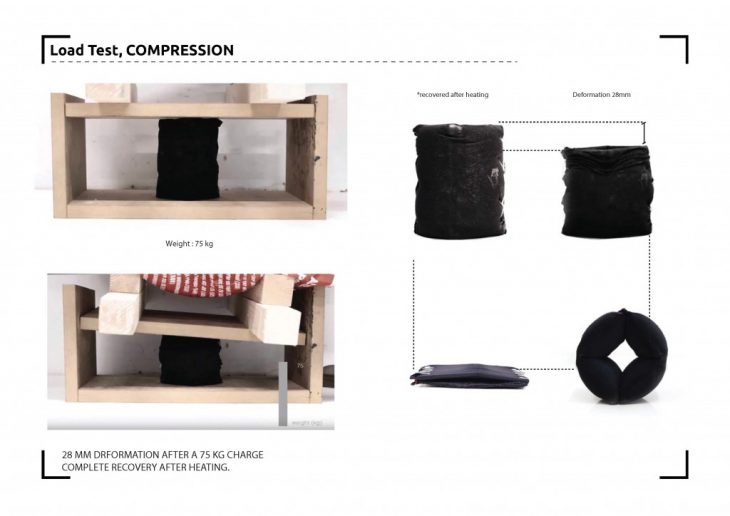
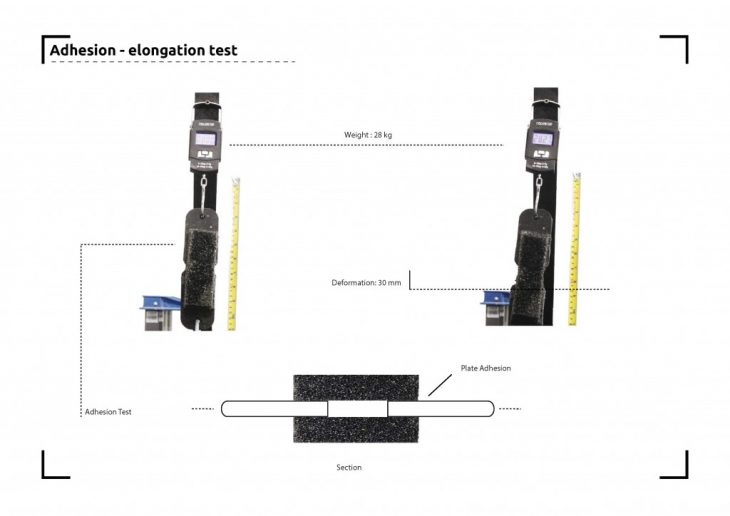
The thermal properties of the solution changed significantly with the inclusion of graphene. This created a slower distribution of heat through the material whilst decreasing heat lose when in a malleable state. Graphene enabled us to create focused heating without affecting surrounding areas of the material. In theory this allows for greater time to manually manipulate the material before it hardens.
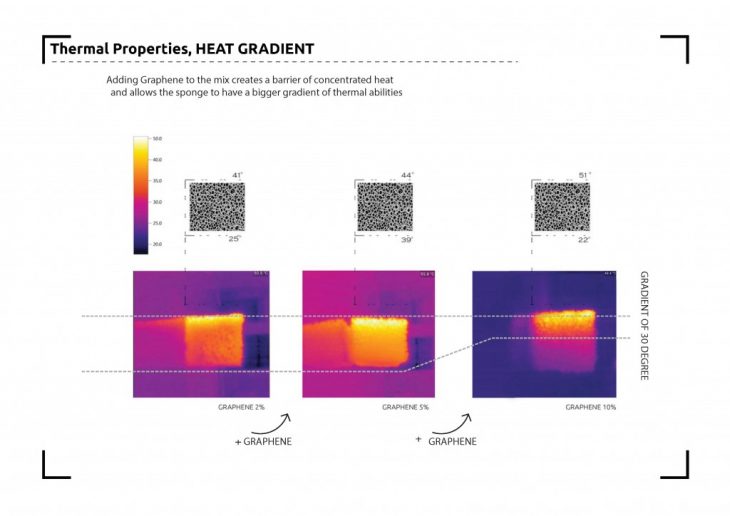
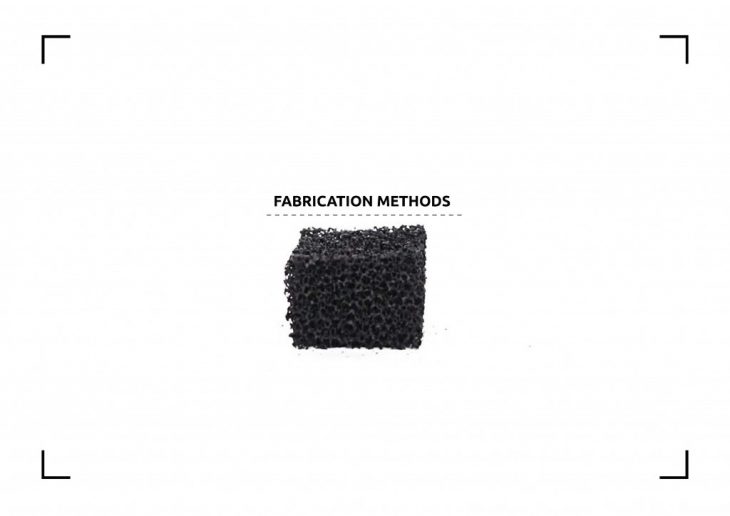
Due to the fact that our mixture experienced various structural properties in relationship to the ratio of wax, rosin, and graphene a gradient PU foam block was constructed. Utilizing a single sponge it was impregnated with the various mixtures to highlight various structural and flexible properties.
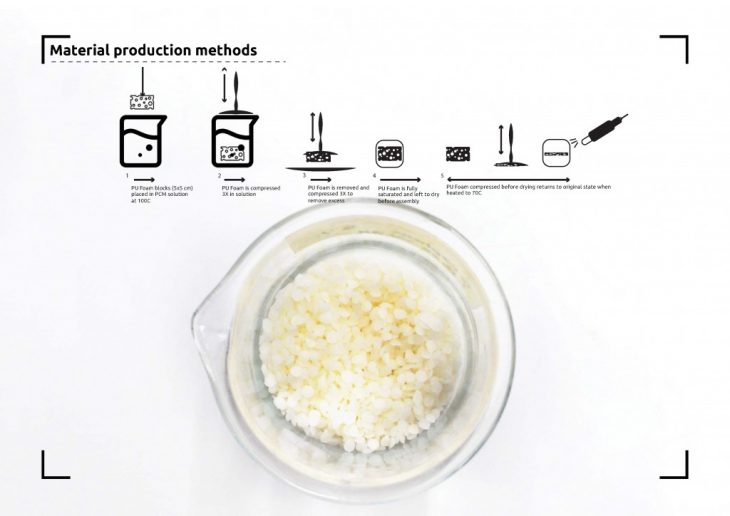
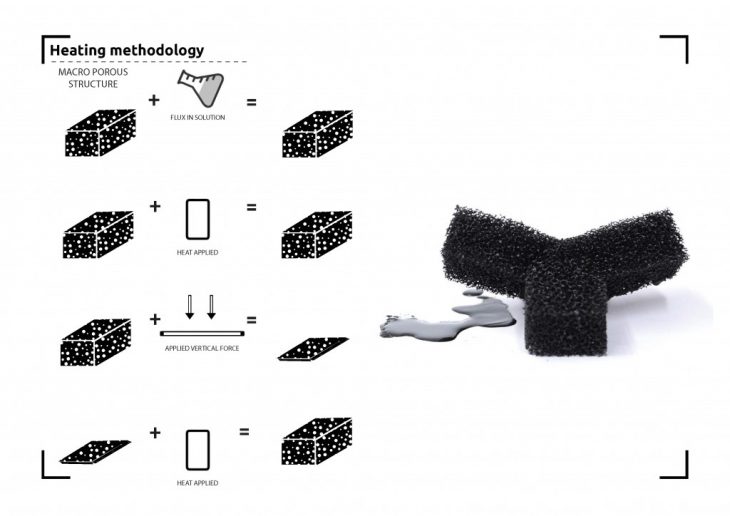
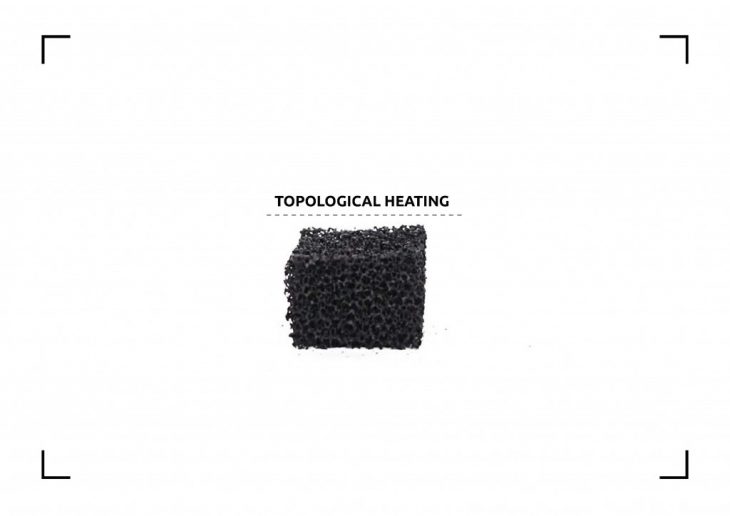
In order to further understand the ability to control our material a heating test was conducted using a 6 axis robot arm. This was used to control the distance, time, path, and angle of heat in order to optimize the resulting shapes and characteristics of the material. Furthering this exploration a genetic algorithm with machine learning was used to understand predictive outcomes of FluxIn.
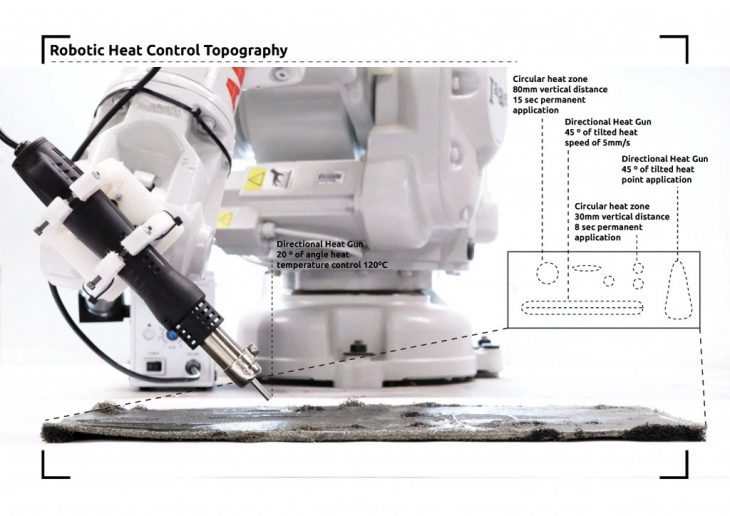
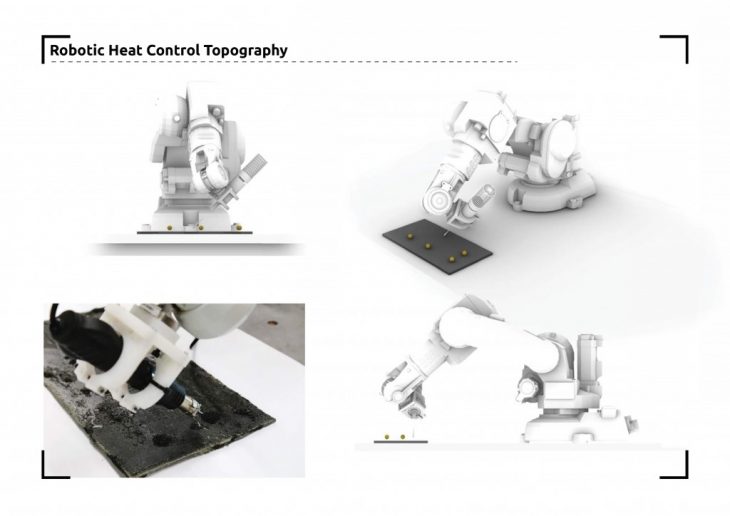
Simulation
This experimentation aimed to simulate and predict future behaviours of Flux-in material through controlled thermal gradients. Utilizing Genetic algorithms, artificial neural networks and machine learning processes our simulation translates multiple case studies into the prediction of possible material characteristics. By implementing deterministic target values we are attempting to obtain feedback of optimized point heat locations. This begins to frame an understanding of the material in relationship to heat and future topographic and expansive performance.
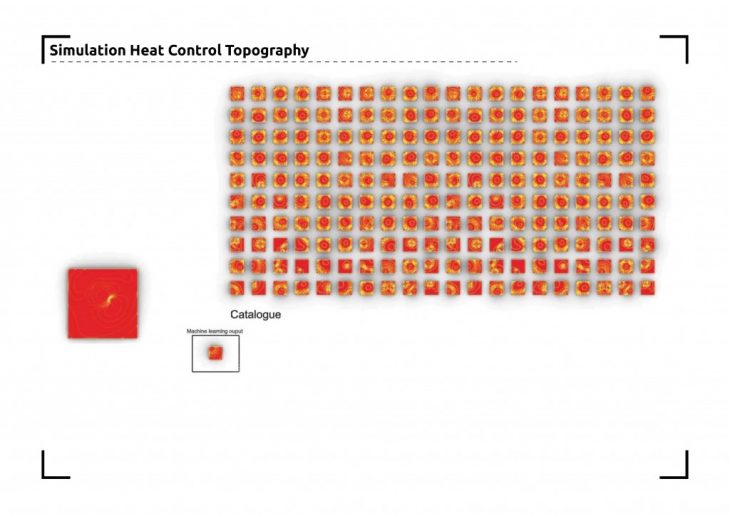
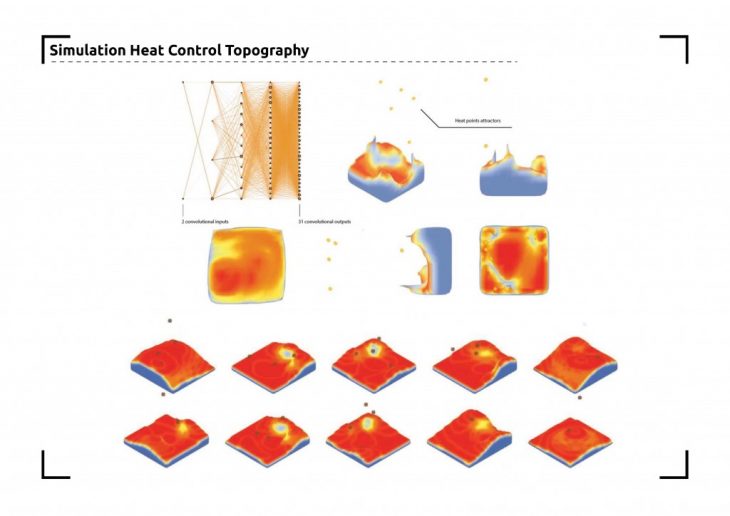
An innovative premise of this research lies in generating a process that is self-structured through the choreography of robotized tool paths that make possible manufacture of our block system (and all its variations) and joins them with empiric results and ambiguous geometries. This technique makes the process attractive for technical issues, our material changes shape same time as the robot heats, bends and leans as the same direction of the blower, but through machine learning, we developed a code that is aware of the different states the panel goes through and moves with FLUX-IN as it take its 3-Dimensional forms easily, thus distributing loads or stresses and heat efficiently throughout the structure. This research project developed a hybrid expression of different techniques often used in pretention architecture, revisiting the definition of what we understand a reactive material to be, and how we can build entire structures evolving around a six-axis construction method.
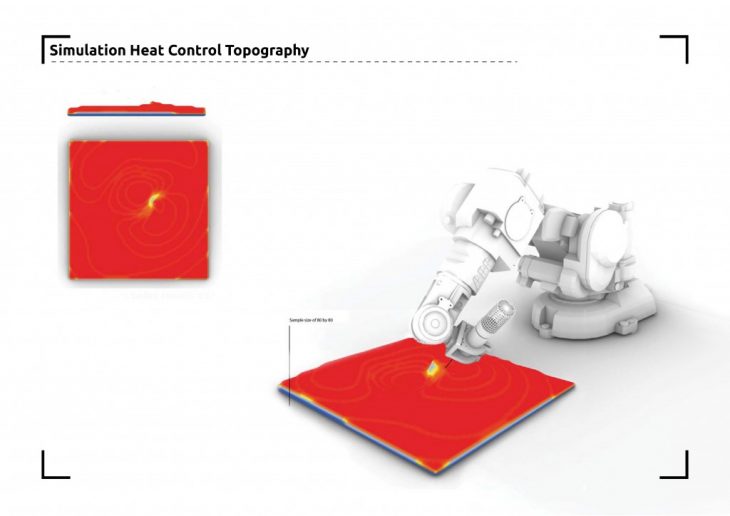
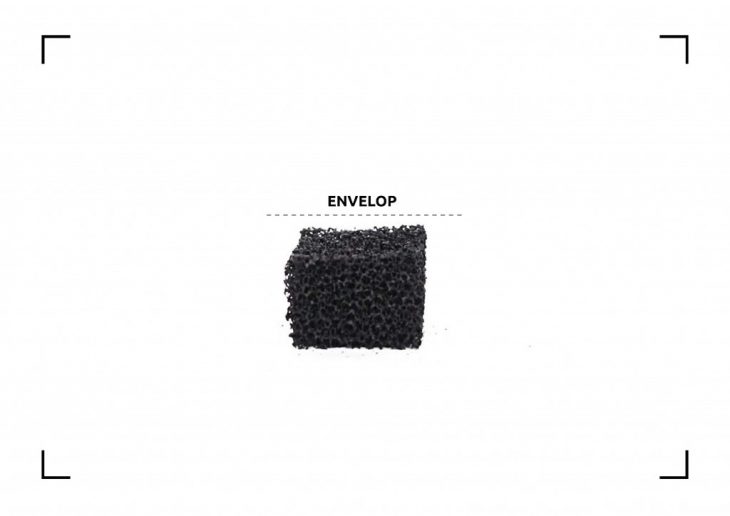
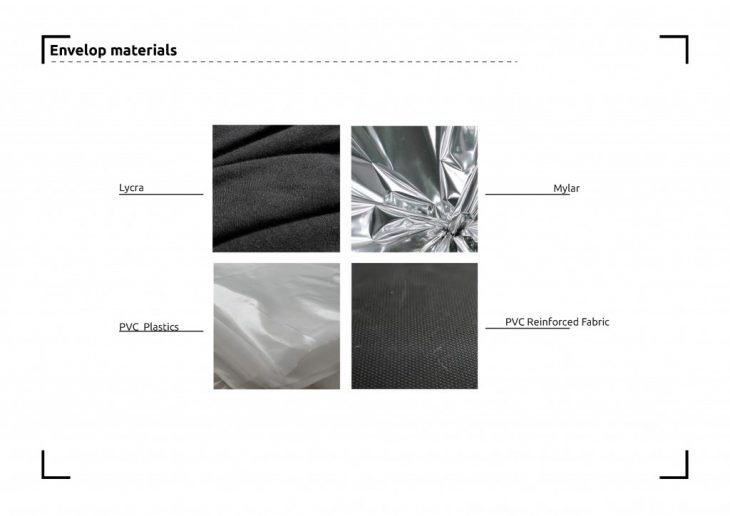
At this stage it was hypothesized that optimal control from 2D to 3D transformation could happen if the material was enclosed. Various envelopes were developed to test the geometric transformation properties as well as reversibility from inflated to to compressed. Plastics were used in combination with heat sealing patterns in an attempt to actuate the material in various states. Mylar was used to test if trapping hot air could decrease heating times from solid to malleable. Lycra was used to constrain CNC patterned geometries on the material whilst allowing for unrestricted expansion. Finally, silicon was used due to its high melting point in an attempt to introduce rapid heating techniques. Although in casing the inFlux material in an envelope provided protection of the material it restricted the inherent adhesion properties and possibility for future scalabilty.
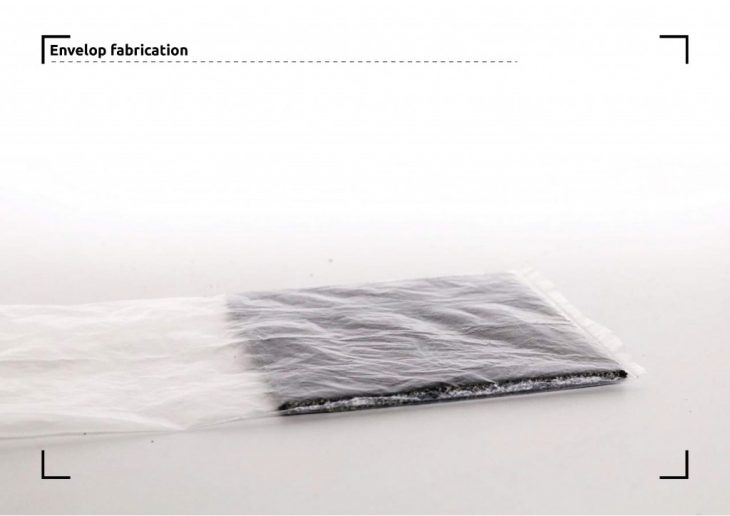
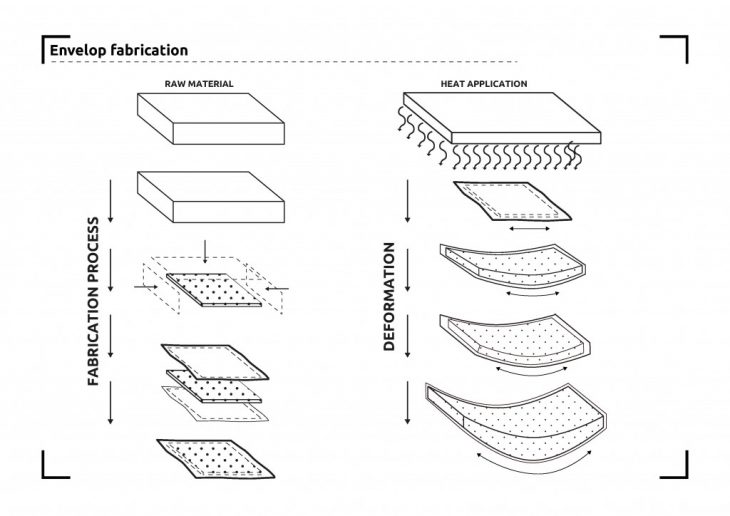
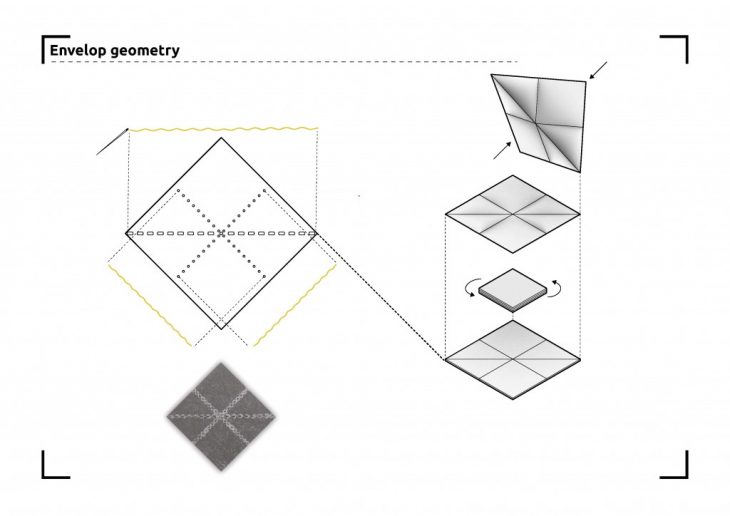
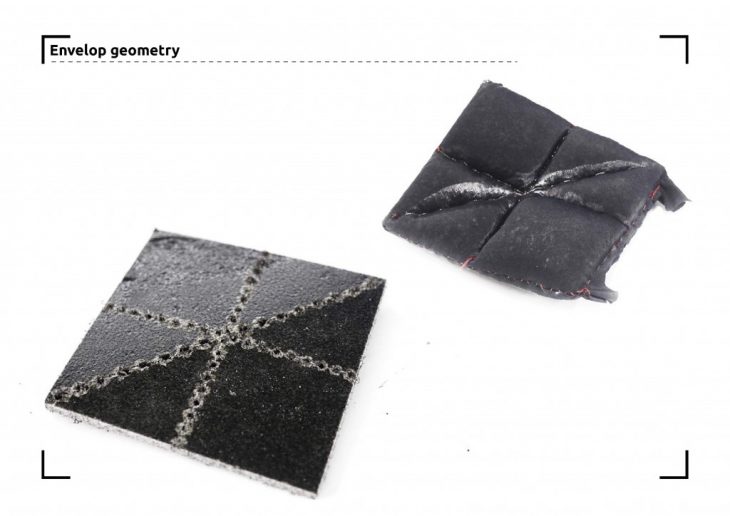
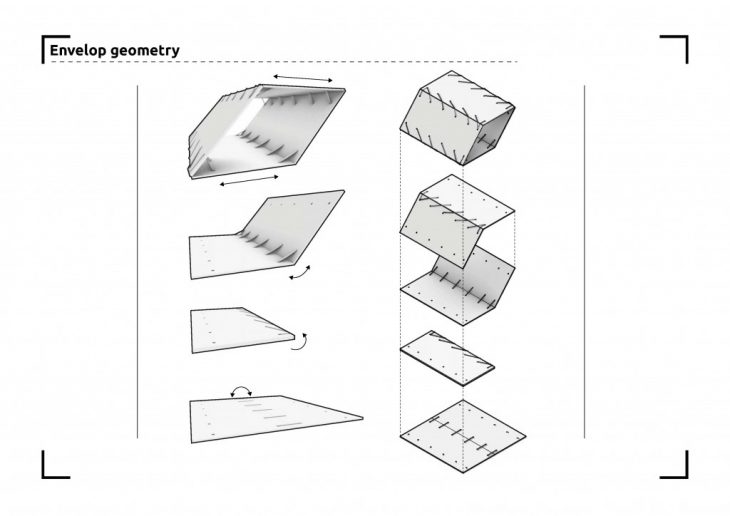
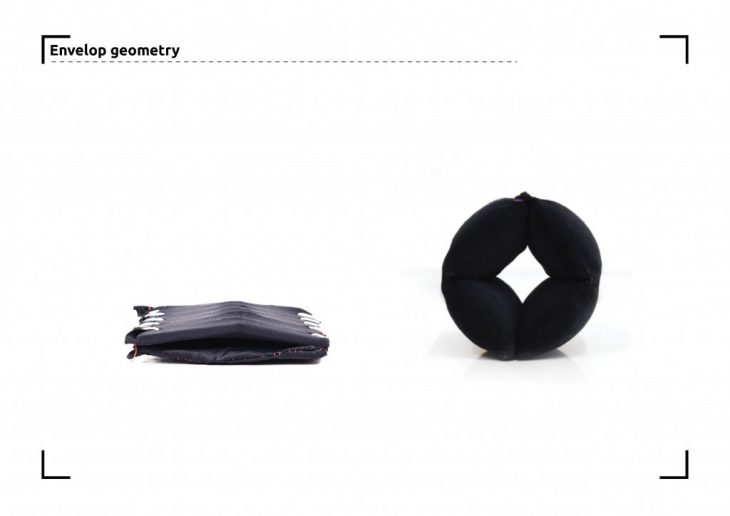

In order to highlight the expansion and adhesive properties of Flux-In it was determined that we could combine the compressed sponges utilizing various joinery techniques. Through this it was hypothesized that we could control the deformation through assembly and then controlled heating.
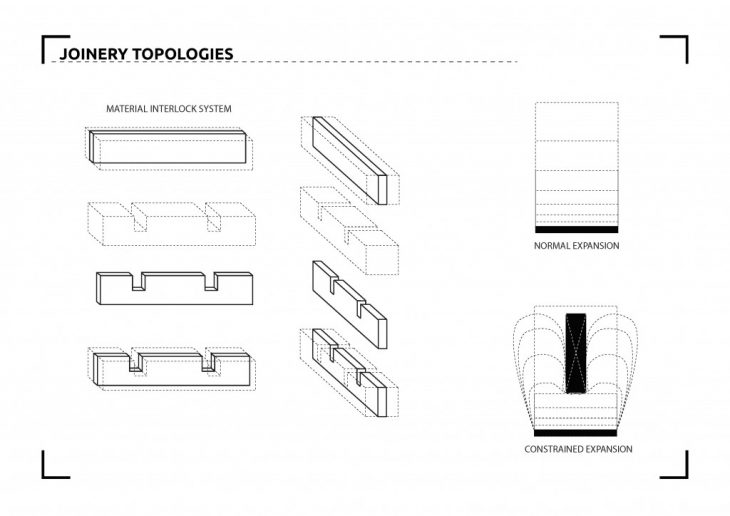
Beginning with a simple halved joinery we determined that after inflation the constricted edges provided extra tension that forced the length of the two pieces to curve in opposite directions from each other, while maintaining adherence as a single module. Through prototyping various halved joinery angles in its compressed state we were able to control the curvature angle after expansion. The deeper the halved joinery the stronger the adhesion after expansion; a vital component in future scalable prototypes. In terms of having control over the joinery from 2D to 3D it was determined that a pocket hole was optimal in creating stability throughout this process. In both cases heating the connection points allowed for focused expansion while the edge of the beams could remain compressed
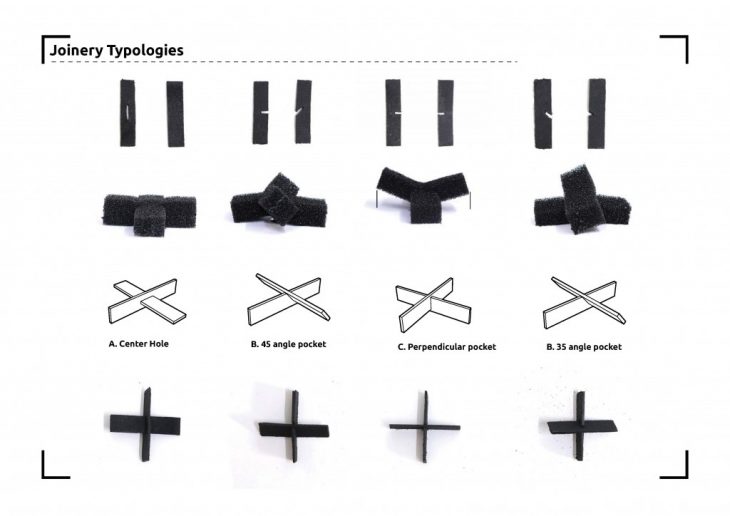
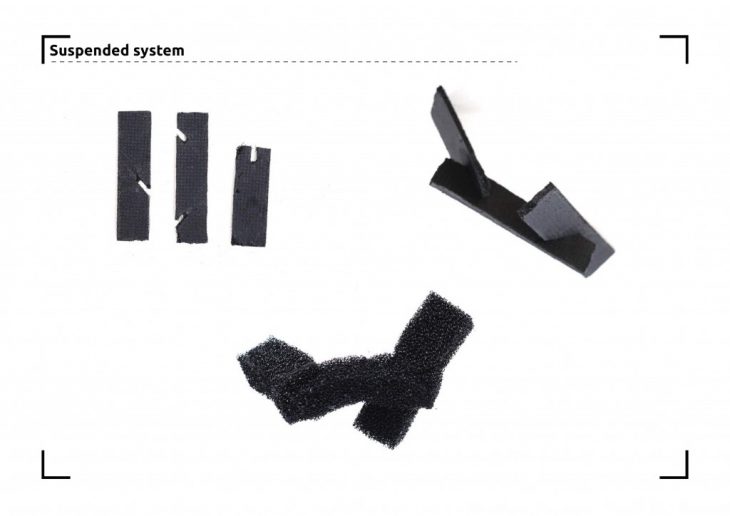
The Nodal typologies were constructed using the same halved joinery with deeper profiles for optimal adhesion. The directional properties were derived from having overlapping elements. A 1-1, 2-1, and 2-2 were developed. The 1-1 exhibits 4 unique directions when heated. The 2-1 has 6 directions due to the added element,and the 2-2 has 8 directions. All the nodes with deeper profiles highlight the strength of the material once heated.
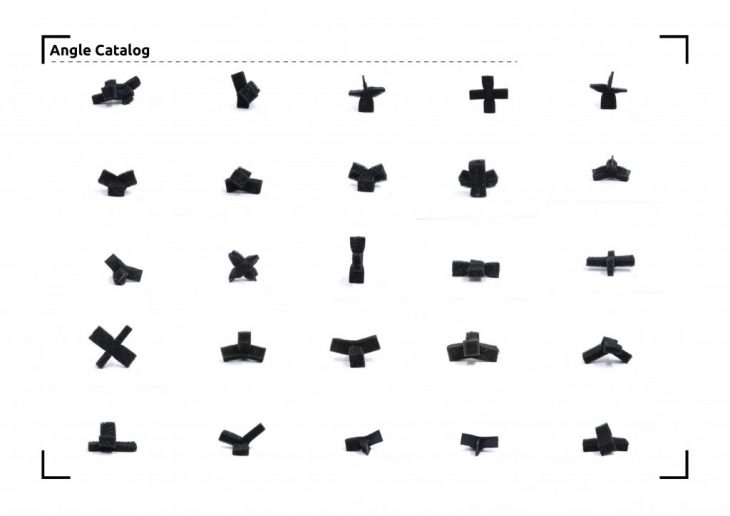
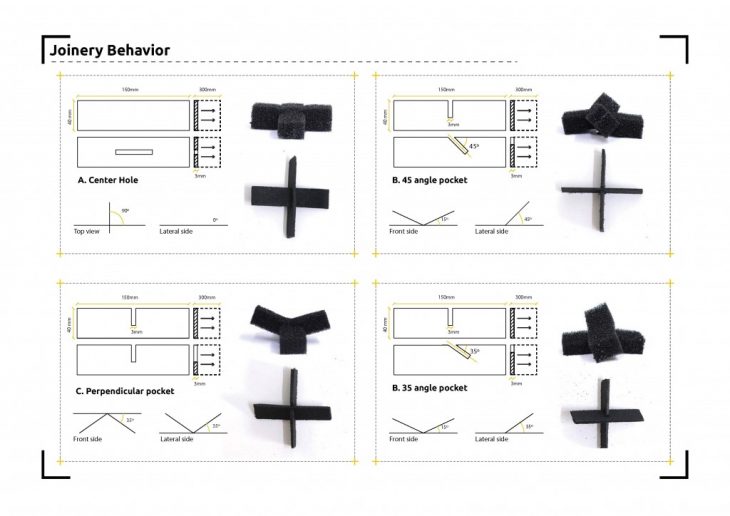
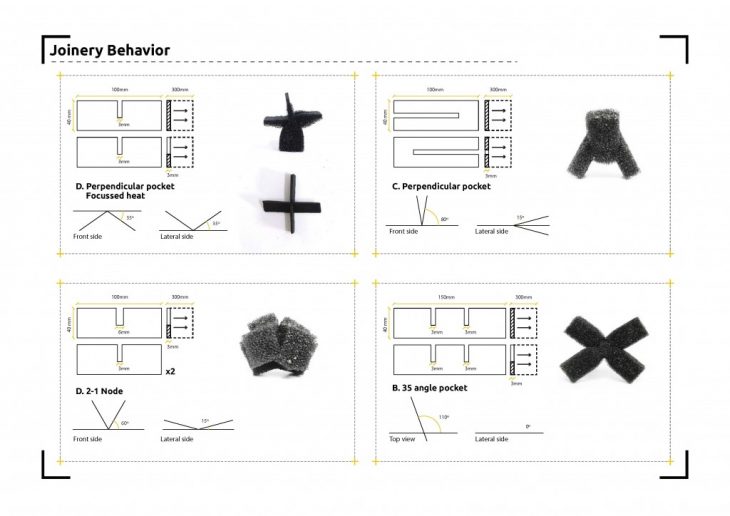
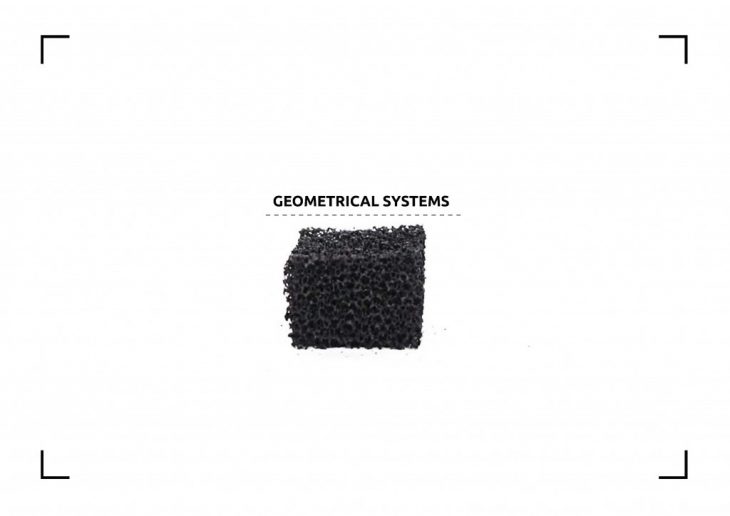
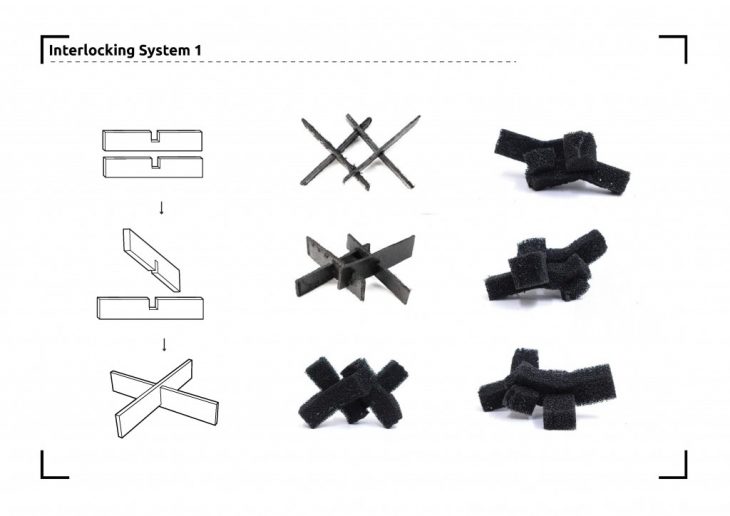
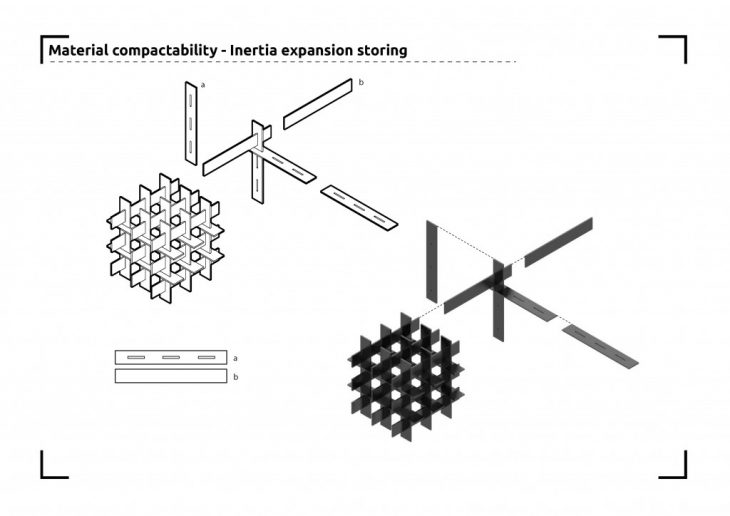
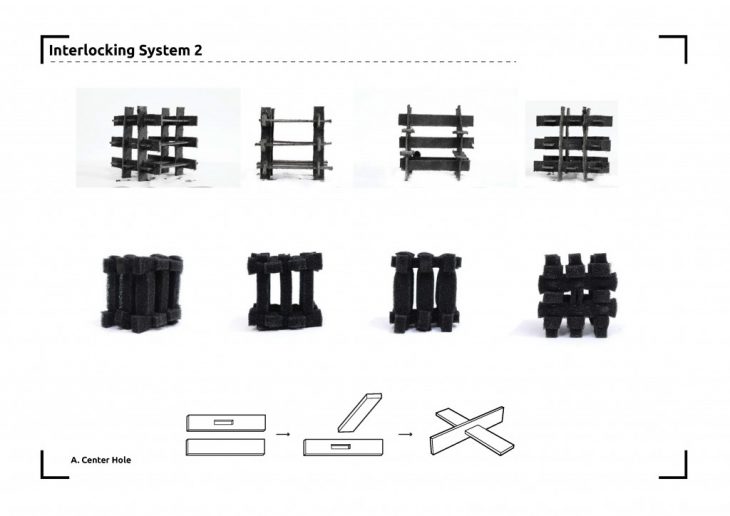
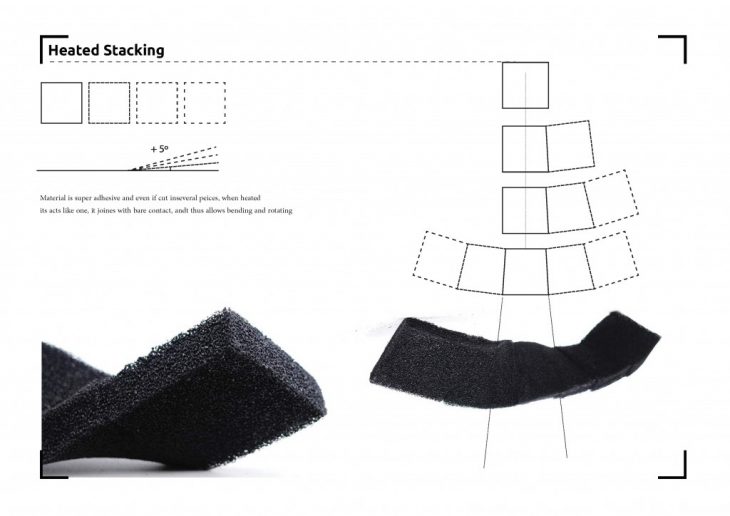
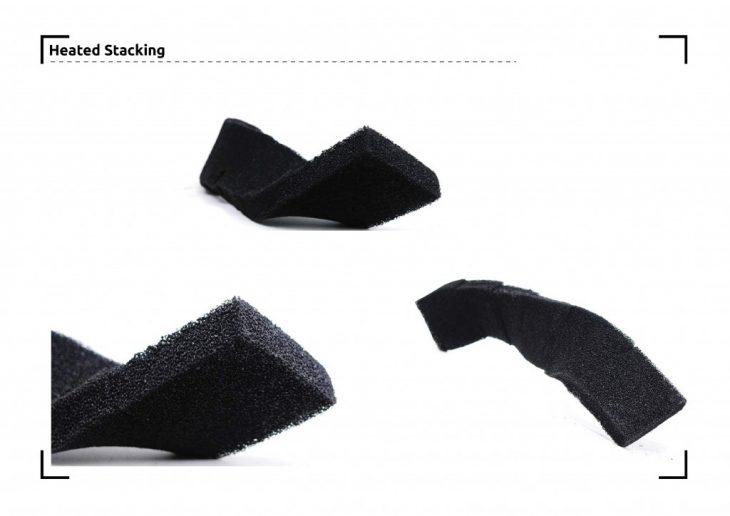
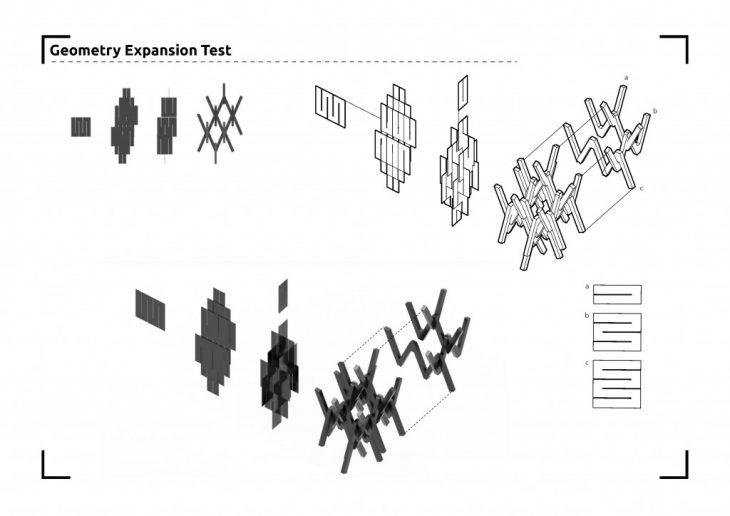
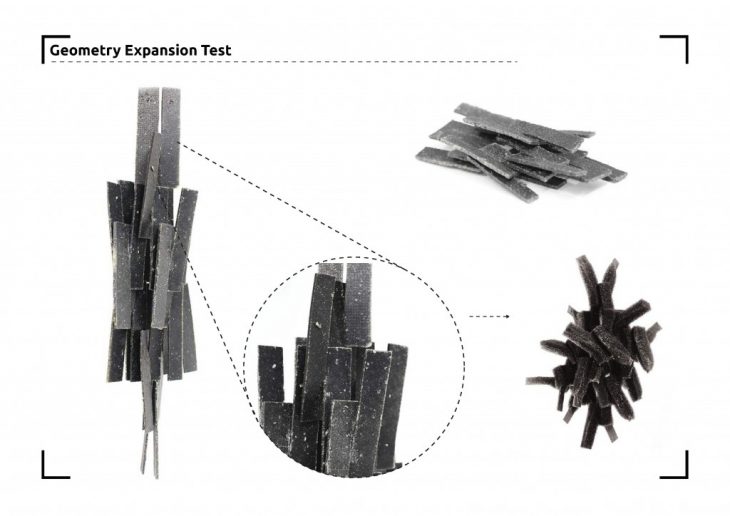
In order to broaden our understanding of the actuation process during expansion fibreglass rods were introduced. This also allowed for more complex systems to be constructed prior to expansion. Through the rod system we were also able to shorten the material members, focusing purely on the actuation that occurs at the joinery connections. Within the constructed multi-layered system its was found that the nodal typologies were still lacking the expansion forces needed to develop a logical self assembled system
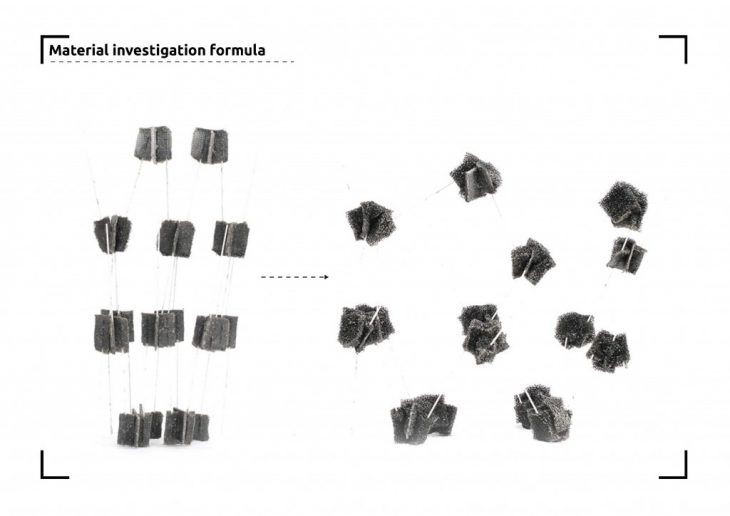
Manual construction of combined fibreglass rods and typical joinery typologies, highlighting adhesive, malleable, and structural performance
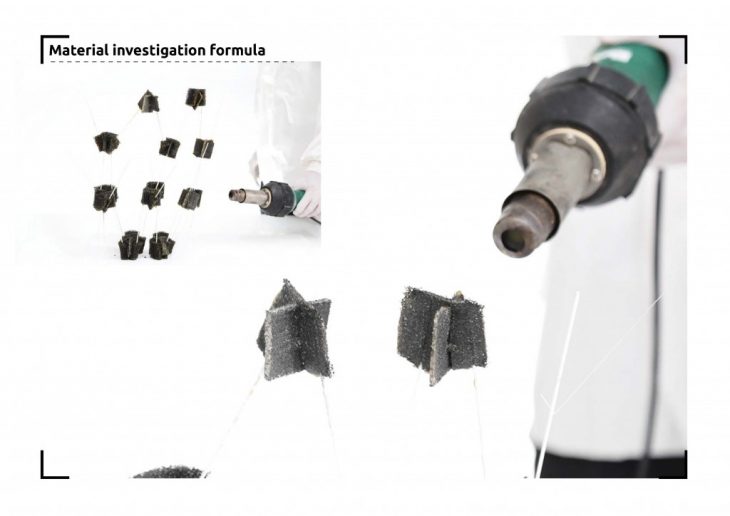
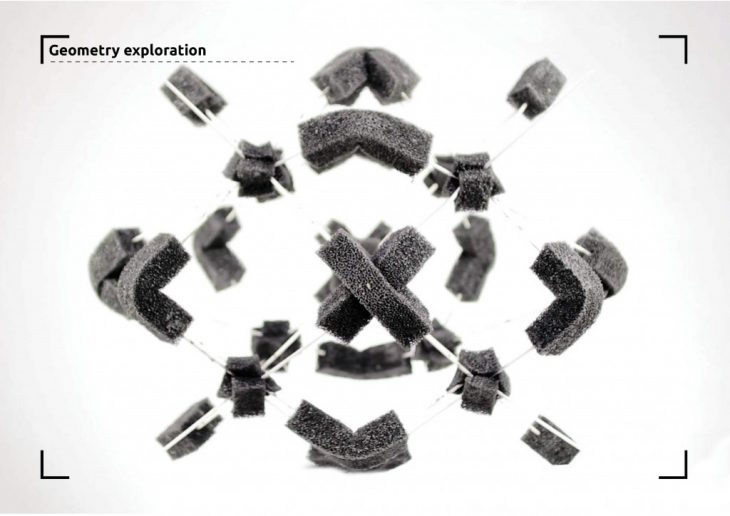
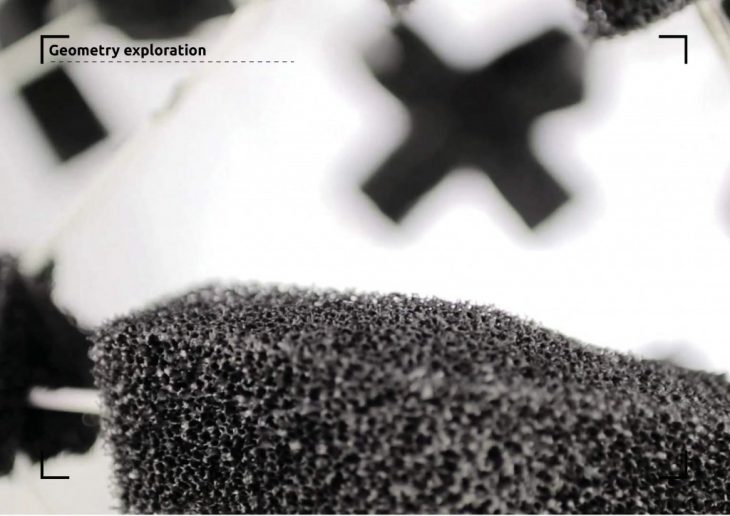
Conclusions
With the utilization of a phase changing materials embedded in a macro porous structure this study was able to highlight Flux-In’s structural, adaptable, adhesive and lightweight properties. Further applications are envisioned to focus research on the development of transitional lightweight macro porous structures with adaptable structural qualities. The key points to extrapolate further are the materials healing capabilities, the minimal impact on other materials during construction, flat packing for easy transportation, and the ability to change shape through heat.
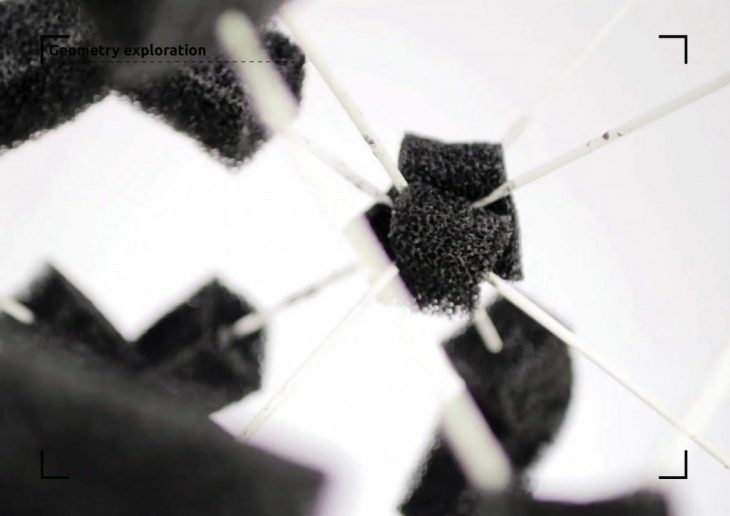
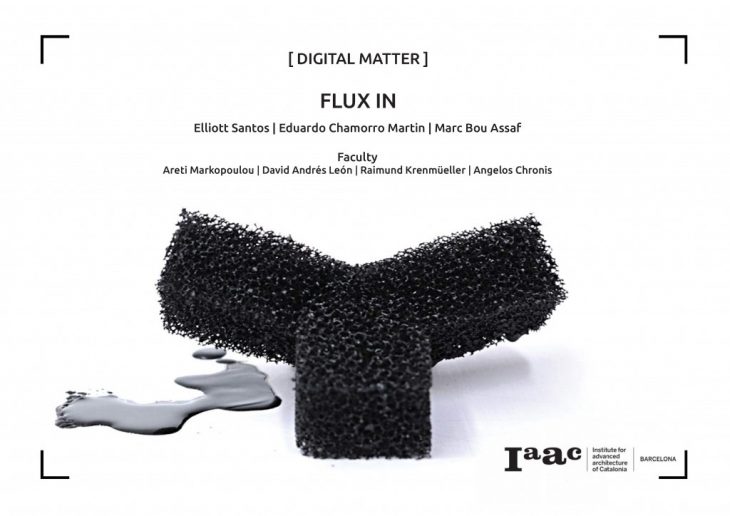
this exercice is part of Digital Matter Studio
Students: Eduardo Chamorro Martin, Elliot Santos, Marc Bou Assaf
Lead Faculty: Areti Markopoulou
Faculty Assistants: David Andrés León, Raimund Krenmüller
Computational Advisor: Angelos Chronis
In collaboration with: IIT, IIT, the Italian Institute of Technology and the Smart Materials Group
IT Material Experts: Athanassia Athanassiou, Ilker Bayer, Giovanni Perotto, Material Scientist